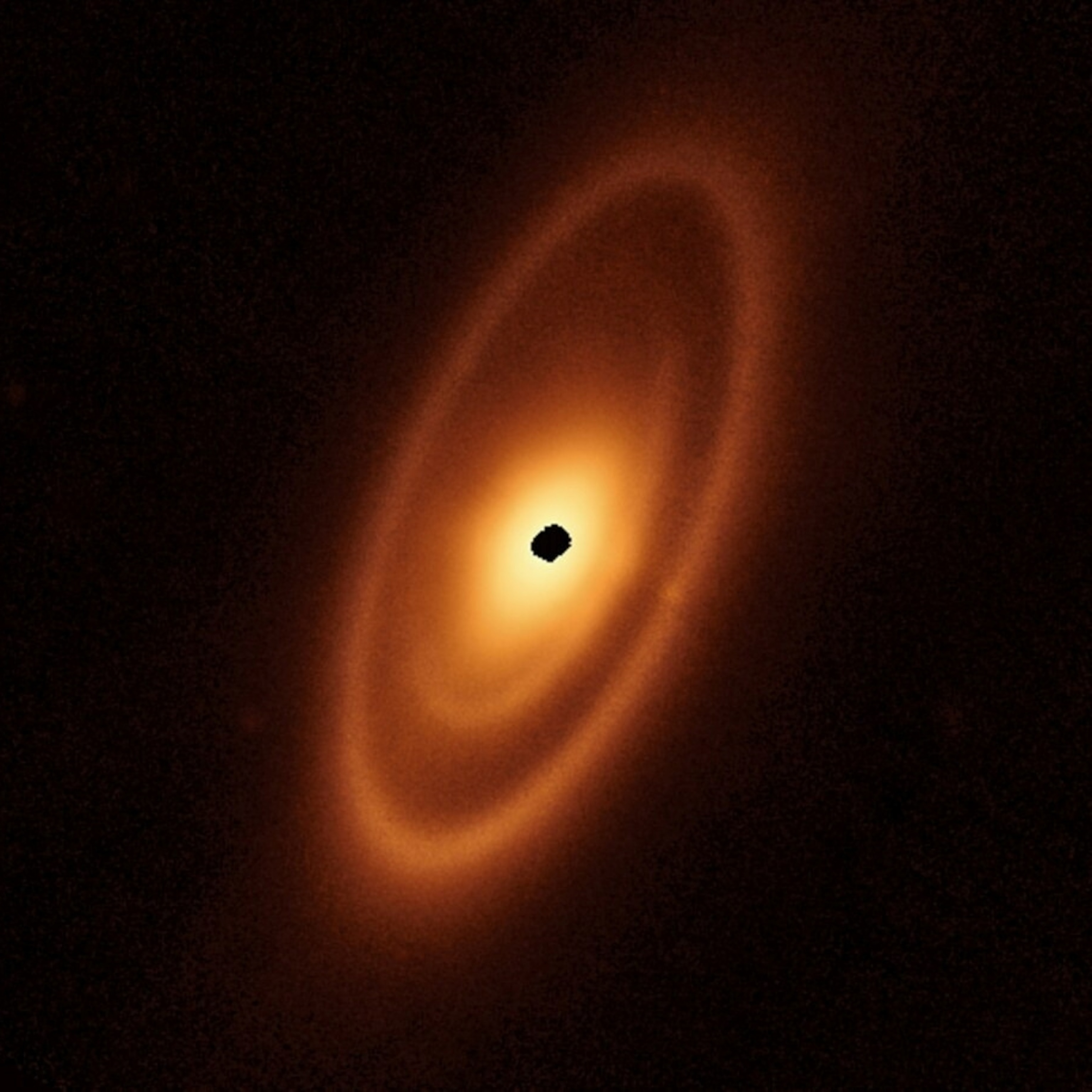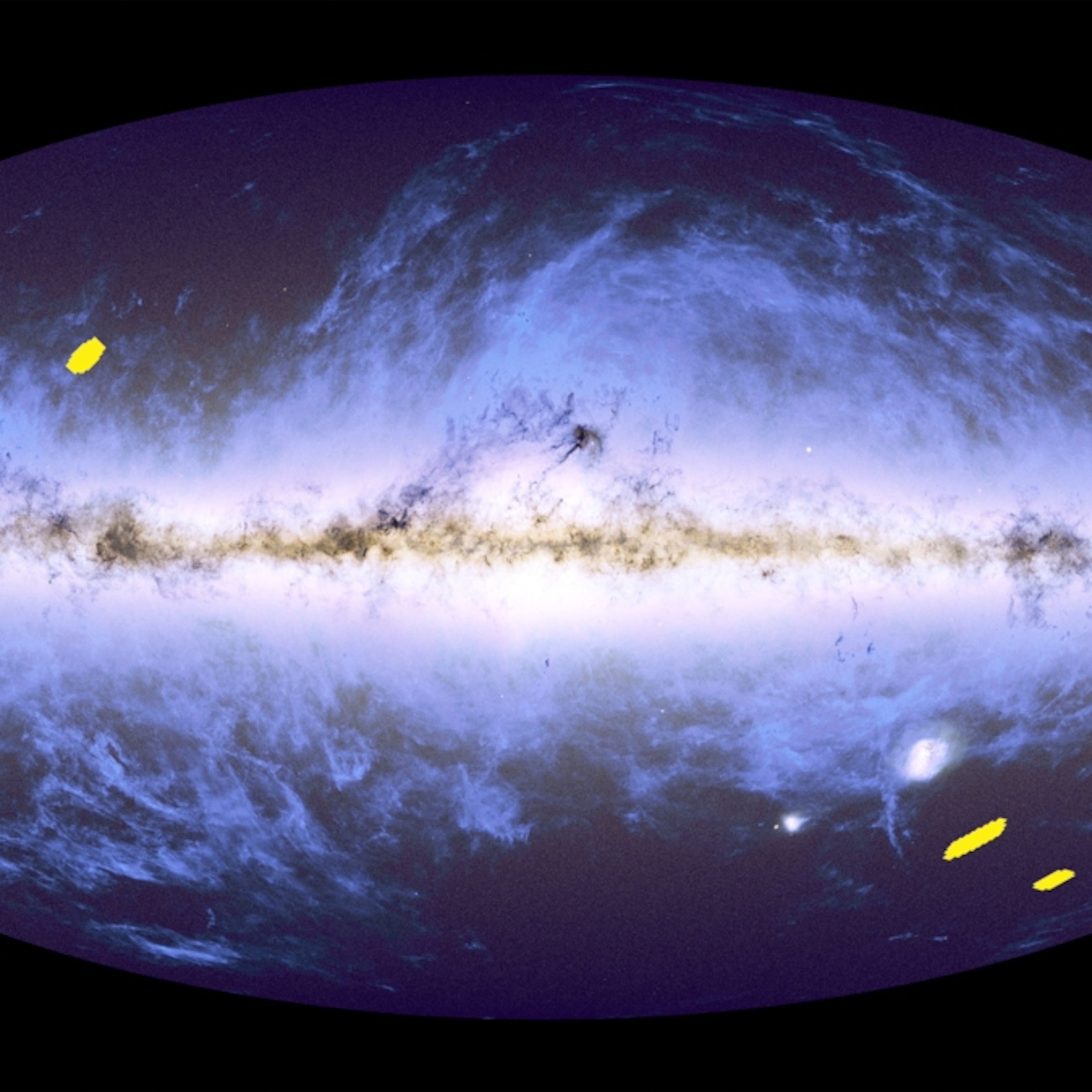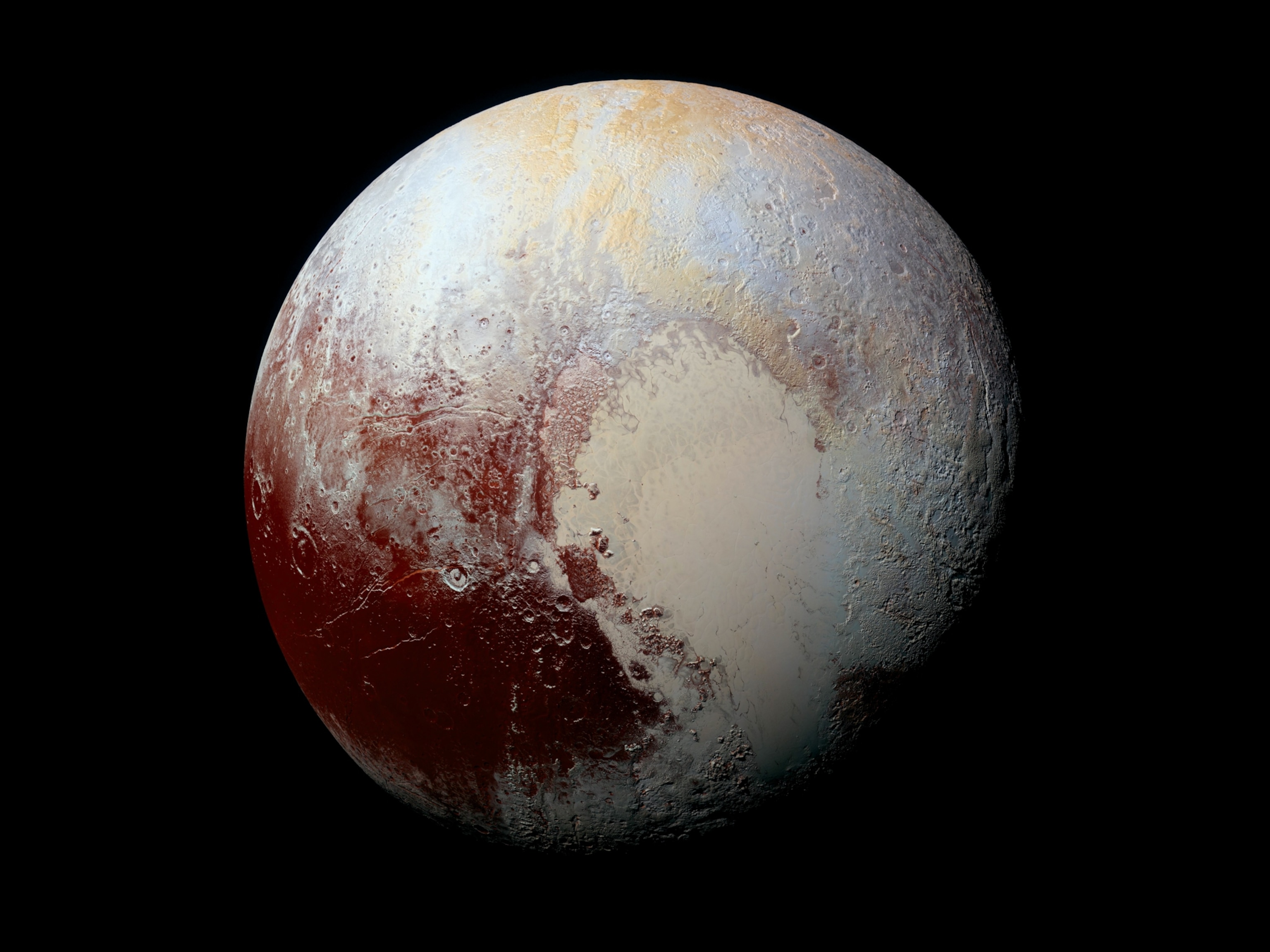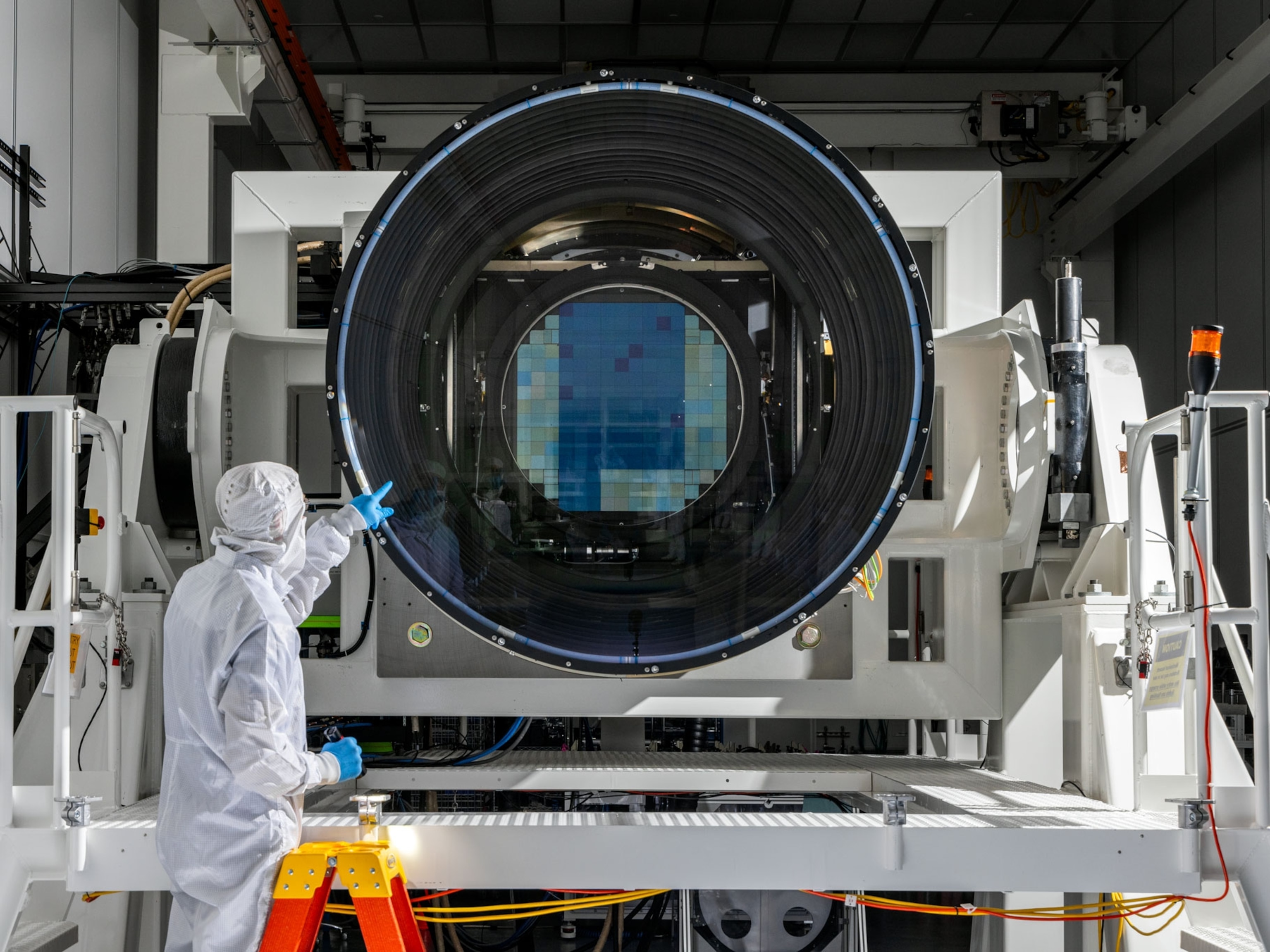
Scientists in Flying Telescope Race to Intercept Pluto’s Shadow
As a spacecraft nears Pluto, NASA's airborne observatory flew over New Zealand to catch a rare passage of the dwarf planet in front of a distant star.
Christchurch, New Zealand — The Boeing 747’s engines roared to life a few minutes after 10 p.m. Monday, blades slicing through the frigid winter air. It was time to rise above the clouds to see Pluto slide across the face of a distant star—a rare celestial alignment that scientists around the world had been anticipating for years.
As the plane hurtled down the runway, the plucky bass and rumbling baritone of Johnny Cash singing “I Walk the Line” filled the communications headsets.
“Have a good flight, and good luck,” came the message from air traffic control.
The lights of Christchurch, New Zealand fell away, and scientists on board the flying telescope—the Stratospheric Observatory for Infrared Astronomy (SOFIA)—quickly got to work. For the next eight hours, the 2.5-meter telescope would stare into the sky, while the crew tried to fly it right through Pluto's shadow.
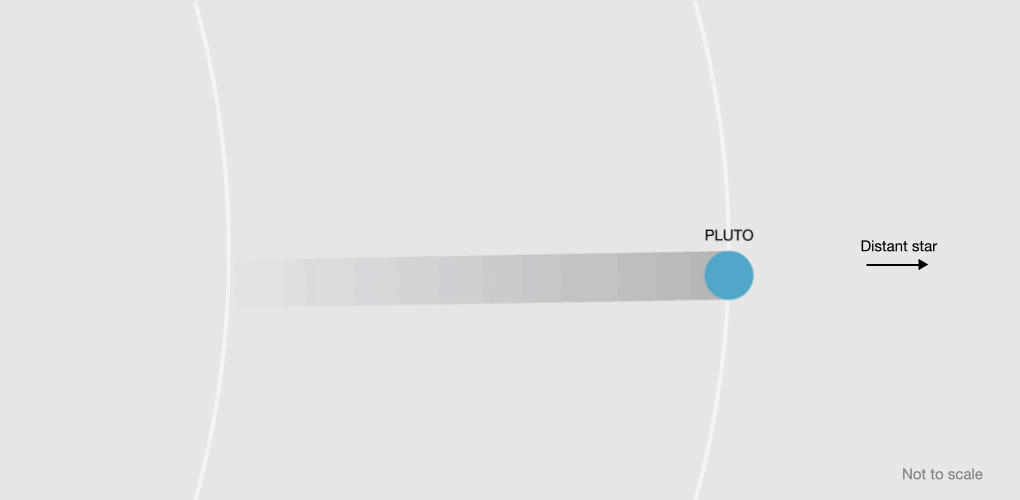
If all went well, the team would collect crucial data on the dwarf planet’s atmosphere, which no one even knew existed until 1988. When combined with the New Horizons Pluto flyby on July 14, the night's observations would help scientists decipher the last three decades of data gathered from Earth.
(Read about the Pluto flyby in National Geographic's July cover story.)
For this to work, we would need to fly the plane right through the center of the shadow cast by Pluto as it crossed the face of that star—a line that would prove hard to catch. After all, the shadow is only as wide as Pluto itself. And plotting a course that accounts for orbital velocities, cosmic alignment, science observations, other airplanes and the speed of a Boeing 747? It’s not simple.
That’s why “I Walk the Line” was just the song to see us off.
Your Mission, Should You Choose to Accept It
Called an occultation, the event would last just two minutes, and it would be visible only from a narrow wedge along Earth’s surface.
Seven miles below us, teams of astronomers had gathered in more than a half-dozen locations in southern Australia, Tasmania, and New Zealand, the land masses predicted to fall within the Pluto-size shadow. Meanwhile, we would fly high above the southern Pacific Ocean, where clouds could not obscure our view.
“The airplane makes all the difference in the world. It’s never cloudy, and you can go exactly where you want to,” said Ted Dunham of the Lowell Observatory, one of the scientists on the flight. “And,” he added with a grin, “it’s a big telescope.”
Our goal was to intercept Pluto’s shadow at the precise moment the dwarf world darkened the face of that faraway star. If we succeeded, three instruments on board would gather crucial data about Pluto’s misbehaving atmosphere. Two would be keeping an eye on the sky in visible wavelengths, the other in infrared.
Together, the data would help scientists figure out how Pluto’s atmosphere has evolved over the 27 years we’ve known about it, and perhaps solve some mysteries that emerged during the very first Pluto occultation.
Plus, scientists will compare the data with observations from the New Horizons spacecraft, which will buzz by Pluto on July 14 and return the first-ever close-up views of the dwarf world.
“We can directly compare this profile to the one derived from New Horizons in two weeks,” said MIT’s Michael Person, principal investigator on the flight. “That’ll help us calibrate all of the observations we’ve been making for 20 years, and all of the observations we’ll make after New Horizons leaves.”
What Are Occultations Good For?
Discovered in 1930, Pluto has perplexed scientists for more than 85 years. Early on, scientists hoped to catch a glimpse of the icy world as it crossed the faces of distant stars.
Occultations let scientists turn those faraway stars into flashlights that can reveal details about a world’s atmospheric structure and composition, its weather, the world’s width, and whether it’s surrounded by rings or moons.
“It goes to show how rich these events are, and they only last for 90 seconds,” said Dunham, who discovered rings around Uranus during a 1977 occultation.
But early attempts to observe Pluto occultations, in 1965, 1980, and 1985, were woefully unsuccessful. Twice, this was because of unfortunate viewing coordinates. Once, explosions from an ongoing air war between Israel and Jordan made the data difficult to interpret.
It wasn’t until 1988, when another telescope took to the sky, that we finally got a good look at an eclipsing Pluto. The results were every bit as profound as expected: Pluto had an atmosphere, and though it was thin, it was remarkably puffy. At that time, planet Pluto was nearing the point in its egg-shaped orbit where it was closest to the sun. Scientists expected that as Pluto moved farther from our home star, the dropping temperatures might lead to atmospheric collapse.
In other words, the entire atmosphere “should turn to ice and land on the ground,” Person said.
Trouble is, data from the next occultation, in 2002, suggested the opposite: Pluto’s atmosphere had gotten puffier. Now, 27 years after that first observation, scientists are still waiting for Pluto’s air to freeze out and fall onto the ground. They’re also still trying to decipher some curious kinks in the original data that suggest a low-altitude layer of haze might hug the planet. The new observations could help with that—as will the New Horizons flyby.
“I’m really glad we have this opportunity so close to the flyby,” Dunham said. “We get to cheat and look up the answer in the back of the book.”
Which Line Are We Walking, Again?
All was going well until several hours into the flight. Around midnight, MIT astronomer Amanda Bosh, who was on the ground at Lowell Observatory in Arizona, sent a surprise: The intercept point had moved more than 200 kilometers north.

“It’s not unusual to have a jump that large,” Person said. “It’s just startling. And we didn’t expect it tonight.”
When scientists recalculated the intercept point, this time accounting for the curvature of the Earth, the point had moved even farther—closer to 300 kilometers away from the original estimate.
“We’re scared of it,” Person said, taking a look at the map.
“So you don’t want to make a judgment and override this?” asked NASA’s Jeffrey Van Cleve, who was helping plot the new flight plan.
No, Person said. They would take a gamble on the new coordinates.
Ironically, the new target was incredibly close to Christchurch. “If we had stayed on the runway and opened the door, we could have done this,” Van Cleve joked. “That’s called the Mach 0 flight plan.”
We would need to fly the plane right through the center of the shadow cast by Pluto as it crossed the face of that star.
So off we went, zigzagging through the night, with the pilots and navigators tracking the aircraft’s position down to the minute. No one knew whether the new coordinates were a last-minute fluke. No one knew if we’d hit our target on the mark, or if we’d miss the occultation entirely.
Bingo!
That is, until a few minutes before 5 a.m., when Pluto slipped in front of that distant star. Chatter erupted over the communications headsets.
“It’s going down!”
“WOW.”
“It’s amazing!”
“This is awesome.”
Then the star emerged from behind Pluto, and scientists gathered around the various onboard displays to take a look at the preliminary data. Turns out, SOFIA had hit its target dead-on—or at least within a respectable 60 to 90 kilometers of the shadow’s center.
“It’s the best occultation I’ve ever seen of Pluto,” says UCLA astronomer Eric Becklin, SOFIA’s chief science advisor. “Thanks, Amanda.”
The infrared data, which are important for identifying low-altitude haze, will take a while to process. But the first data in visible light suggest that astronomers will have to keep waiting for Pluto’s atmosphere to freeze out.
“The collapse hasn’t started yet—or if it has, it’s not significant,” Person said. “We’ll have to wait a couple of years and see if [the collapse theory] gets trashed or not.”
SOFIA’s path through the shadow also captured what’s known as a central flash—when an occulting planet acts like a lens and focuses a star’s light into a point. Based on the shape of the flash, teams can determine whether the planet's atmosphere is a little lopsided, perhaps because of wind.
“We are basically measuring weather on Pluto, from Earth,” says Leslie Young, deputy project scientist on the New Horizons team.
More than eight hours after Johnny Cash had accompanied us into the sky, we slowly descended through the Christchurch skies. We were behind schedule, but nobody cared. The data looked great. Early reports from the ground suggested observers in Tasmania and on New Zealand’s south island had also gotten good data.
“How was the flight tonight?” air traffic control asked.
The reply: “It was outstanding.”
Follow Nadia Drake on Twitter.


